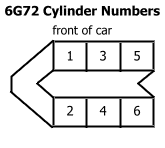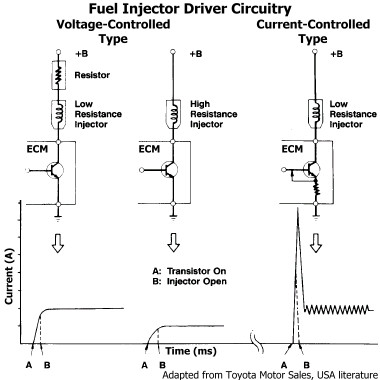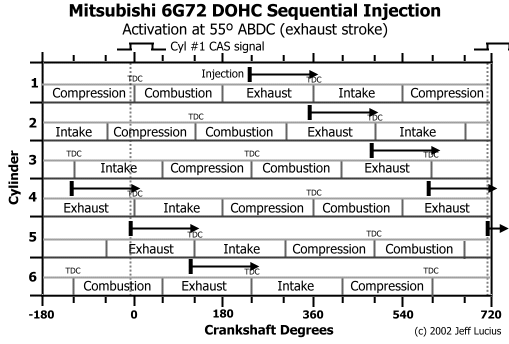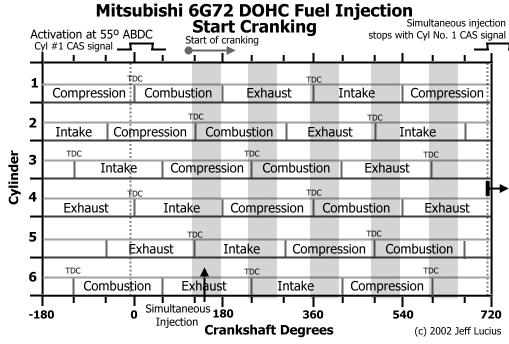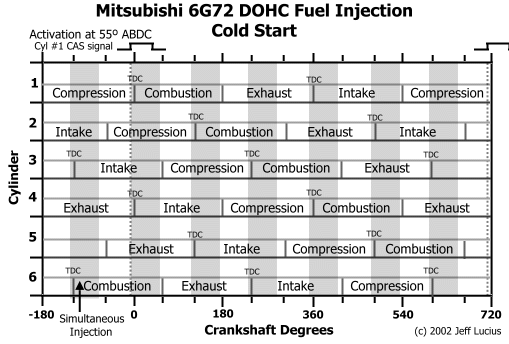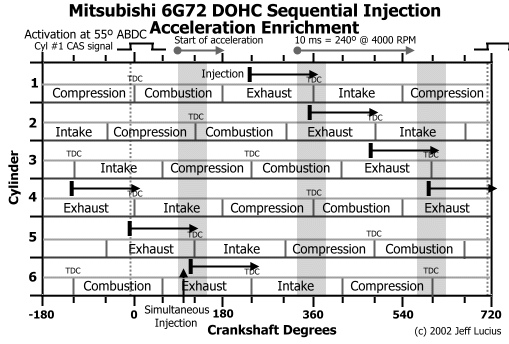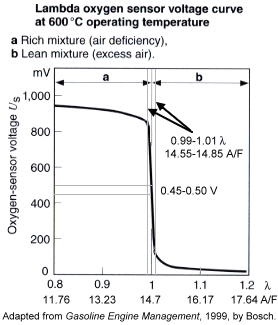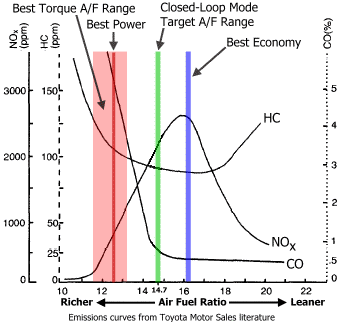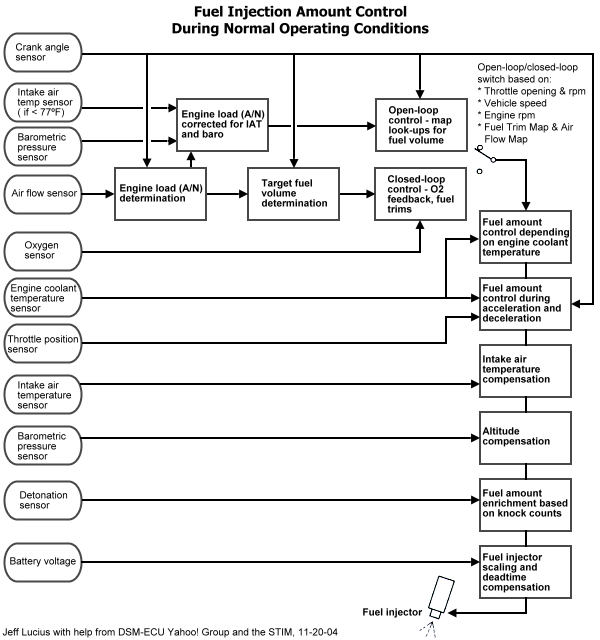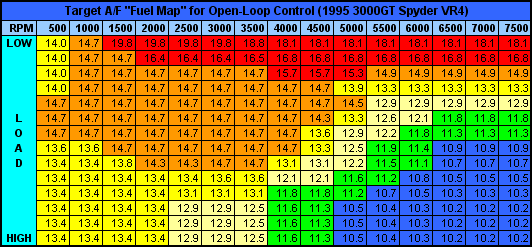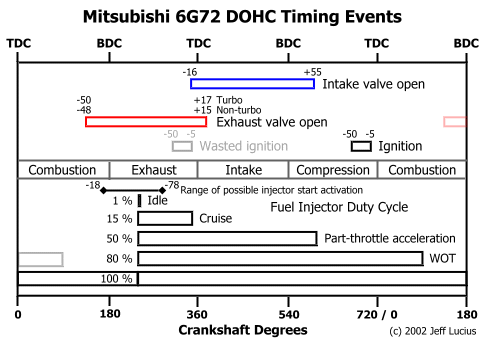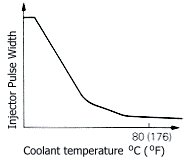
|
Fuel vaporization is poor when the engine is cold. The injection duration is increased (A/F richened) when the coolant temperature is below 80ºC (176ºF) to improve driveability.
|
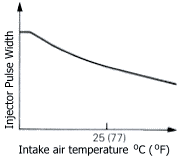
|
At any particular volume air flow, a change in air temperature changes the air density. The colder the air is, the denser the air becomes. When the air temperature is below 25ºC (77ºF), the basic injection duration is increased, and when the air temperature is above the standard temperature the duration is decreased.
|
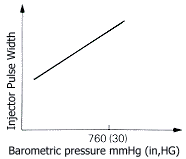
|
Air density at a particular volume flow decreases as barometric pressure decreases. The injector duration is adjusted when the atmospheric pressure is above or below the standard value of 760 mm Hg (29.9 in Hg).
|
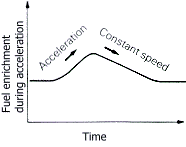
|
Because fuel is denser than air and cannot move into the cylinder as quickly during engine acceleration, a momentary lean condition can exist. To compensate for this, the injection duration is increased. Extra injection pulses also may be delivered (see above). Injection duration is reduced during deceleration to improve fuel economy and emissions.
|
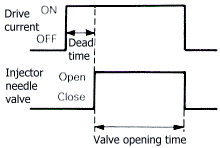
|
When current flows through the injector solenoid coil, the needle valve is pulled up into the injector to allow fuel to flow. The time lag between the time the current starts and the time the valve is fully open is called the dead time. Because the valve moves faster when more current is available, the injection activation signal time is decreased when battery voltage is high and increased when battery voltage is low. However, the actual opening time of the injector remains the same.
|
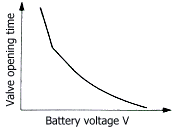
|
